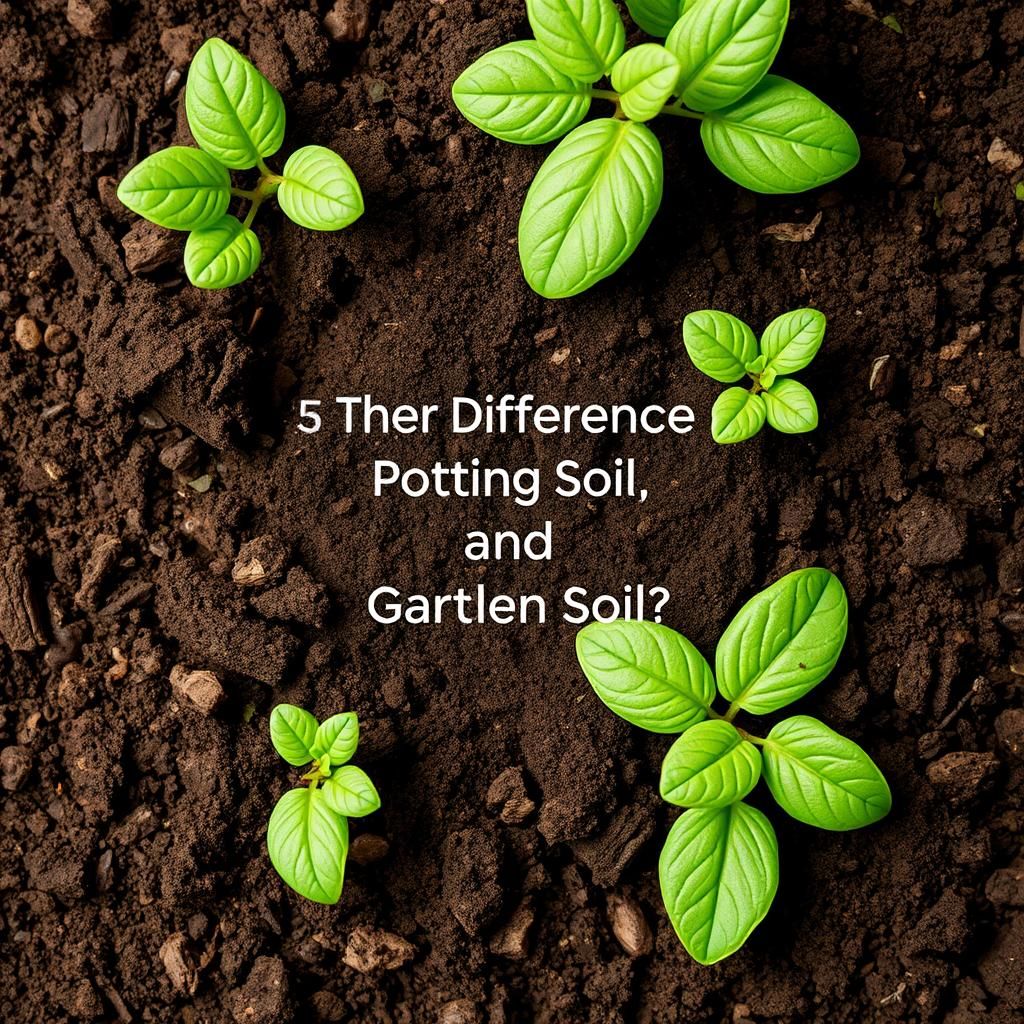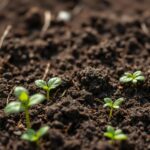Is There Really a Difference Between Potting Soil and Garden Soil? Everything You Need to Know

When it comes to gardening, understanding the types of soil you use can make a significant difference in the success of your plants. Two commonly discussed soil types are potting soil and garden soil, but many gardeners aren’t aware of the distinctions between them. This article delves into the unique characteristics, compositions, and ideal uses of potting soil and garden soil. By exploring these differences, you’ll gain the knowledge necessary to select the right soil for your gardening needs, ensuring healthy growth for your plants, whether they are in containers or directly in the ground.
Understanding the Differences Between Potting Soil and Garden Soil
Potting soil and garden soil serve different purposes in the realm of gardening, each formulated to meet specific needs. Potting soil is typically a lightweight mixture designed for containers, enriched with organic materials such as peat moss, coconut coir, and various fertilizers to support plant growth in confined environments. In contrast, garden soil is often a more dense composition containing a blend of natural minerals, organic matter, and clay, tailored for planting directly in the ground. Due to its richness in nutrients, garden soil can promote healthy growth in outdoor plants but may lack drainage and aeration compared to potting soil, making it unsuitable for container gardening. Thus, knowing the distinct characteristics of these two soils is crucial for achieving successful gardening outcomes.
The Composition of Potting Soil
Potting soil is primarily composed of organic materials such as peat, perlite, and vermiculite, which provide excellent aeration and drainage for plants grown in containers. This soil mix is often sterilized to eliminate pathogens, making it a safe option for nurturing delicate seedlings and fragile plants. Additionally, potting soil may include added fertilizers to provide the necessary nutrients for growth, ensuring that container plants thrive in their limited environments.
The Composition of Garden Soil
Garden soil usually consists of a blend of topsoil, sand, and organic matter like compost. This mixture offers a more natural environment for plants, allowing them to establish strong root systems in ground conditions. Unlike potting soil, garden soil benefits from microbial activity inherent in its composition, improving nutrient availability and supporting a healthy ecosystem around the plants. However, garden soil can sometimes be compacted, which may hinder root growth and drainage if not properly amended.
Drainage and Aeration Properties
One of the significant differences between potting soil and garden soil lies in their drainage and aeration properties. Potting soil is formulated to retain moisture without becoming waterlogged, allowing for optimal oxygen flow to plant roots. This is essential in container gardening where excess water can build up quickly. In contrast, garden soil may not drain as efficiently, especially if it contains a high percentage of clay. Proper aeration is crucial for root health and can be improved by incorporating organic materials to create a balanced structure.
See also:
Usage Scenarios for Potting Soil and Garden Soil
Each type of soil has specific scenarios where it excels. Potting soil is ideal for indoor plants, window boxes, and containers, providing the right conditions for plants that require stable moisture and nutrients. On the other hand, garden soil is perfect for directly planting flowers, vegetables, and shrubs in gardens and landscapes, where plants can take advantage of the natural ecosystem and deeper soil layers that provide anchorage and additional nutrients.
Cost Considerations
When considering the cost, potting soil tends to be more expensive than garden soil due to its specialized ingredients and formulations that promote container gardening. The cost reflects the quality of the components, often including fertilizers and beneficial microbes designed to aid in immediate plant growth. Garden soil, while generally cheaper, may require additional amendments over time to enhance its quality and nutrient content, potentially affecting long-term expenses for gardeners.
| Aspect | Potting Soil | Garden Soil |
|---|---|---|
| Composition | Organic materials, peat, perlite | Topsoil, sand, compost |
| Drainage | Excellent drainage | Varies; can be compacted |
| Usage | Containers, indoor plants | Gardens, landscapes |
| Cost | Generally higher | Typically lower |
| Fertilization | Pre-fertilized | May require amendments |
Understanding the Key Components of Potting Soil and Garden Soil
Potting soil and garden soil are formulated for different purposes, and understanding their key components is essential for optimal plant health. Potting soil is typically a lightweight mix that includes ingredients like peat moss, vermiculite, and perlite, which provide excellent drainage and aeration for container plants. On the other hand, garden soil is often denser and enriched with nutrients, making it suitable for in-ground planting. The differences in texture, structure, and nutrient content can greatly affect the growth and overall health of your plants.
The Composition of Potting Soil
Potting soil generally consists of a blend of organic materials, such as peat moss, compost, and sometimes bark or coir. This mixture is designed to create an ideal environment for potted plants by ensuring proper aeration and eliminating the risk of compaction, which can be detrimental to root growth. Its lightweight nature allows for easier handling and better water retention relative to its volume, making it perfect for container gardening.
The Composition of Garden Soil
Garden soil, in contrast, is often composed of a mixture of the existing topsoil, organic matter, and sometimes additives like sand or clay to improve drainage or retention. It is usually richer in nutrients compared to potting soil, and its texture can vary significantly based on the location, impacting its fertility and microbial activity. Understanding the specific characteristics of your garden soil can help inform appropriate soil amendments for successful plant growth.
See also:
When to Use Potting Soil vs. Garden Soil
Choosing between potting soil and garden soil largely depends on the planting method you intend to use. Potting soil is ideal for container gardens, houseplants, and seedlings that need optimal drainage and nutrition without the risk of overwatering. Conversely, garden soil is better suited for landscaping and outdoor garden beds, where plants can establish deeper root systems and benefit from the full range of nutrients present in the ground.
Drainage and Water Retention Differences
One of the stark contrasts between potting soil and garden soil is in drainage and water retention capabilities. Potting soil is designed to allow excess water to escape easily, preventing root rot and promoting healthy growth in containers. In contrast, garden soil may hold moisture for extended periods, which can be beneficial for some plants but could pose risks for others susceptible to overwatering.
Environmental Considerations
Both potting soil and garden soil come with their own environmental impacts. Potting soil often contains components like peat moss, whose harvesting can lead to habitat destruction and increased carbon emissions. Garden soil, especially when treated with chemical fertilizers, can pose risks of soil degradation and pollution. Understanding these impacts can guide gardeners in making environmentally conscious choices and encourage the use of organic amendments across both soil types.
Questions from Our Readers
Is there a difference between potting soil and garden soil?
Potting soil and garden soil are not the same; potting soil is specifically designed for container gardening, while garden soil is meant for in-ground planting. Potting soil typically contains materials like peat moss, vermiculite, and perlite, which improve aeration and drainage, making it ideal for pots. In contrast, garden soil is often denser and may contain more organic matter, but it can vary greatly depending on the region.
Can I use garden soil for potted plants?
Using garden soil for potted plants is generally not recommended because it can compact easily and may not provide adequate drainage or aeration. Garden soil may also harbor pests or diseases that could harm container plants. Therefore, opting for a high-quality potting soil can enhance plant health and growth in containers.
See also:
What are the main components of potting soil?
Potting soil is typically composed of a mix of organic and inorganic materials designed to optimize plant growth in containers. The key components usually include peat moss, compost, coconut coir, and various additives like perlite or vermiculite for improved drainage and aeration. These ingredients work together to create a lightweight and nutrient-rich medium.
Can I make my own potting soil?
Yes, you can easily make your own potting soil at home, which allows for customization based on your plants' needs. A basic recipe involves mixing equal parts of peat moss, perlite, and vermiculate or compost. This homemade blend ensures good aeration, drainage, and nutrient content, making it suitable for a variety of potted plants.

If you want to read more articles like Is There Really a Difference Between Potting Soil and Garden Soil? Everything You Need to Know, we recommend you check out our Soil category.
Leave a Reply
Related Articles